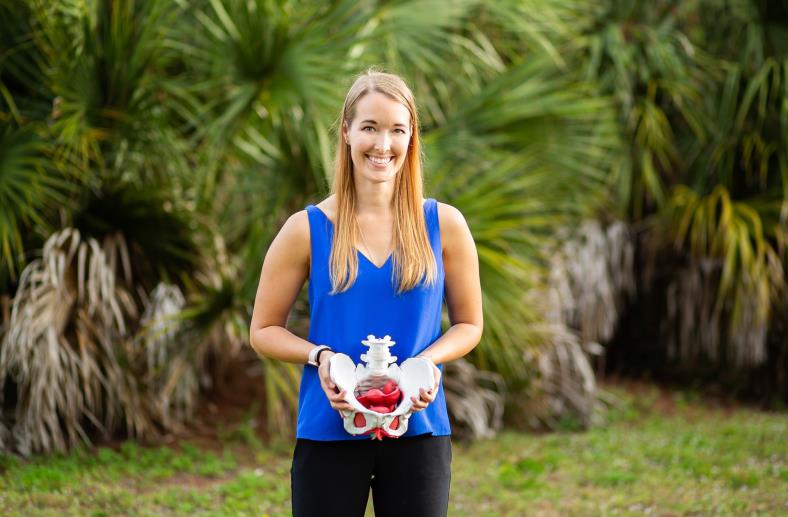Many women across the world suffer low esteem, physical alienation, and psychological trauma as a consequence of vaginal prolapse. The condition affects 6% of women, and more than half of these cases are poorly managed.
The hallmark of vaginal prolapse is weakness in the pelvic floor that causes protrusion of pelvic organs into the vaginal canal. Surgical repair has always taken centre stage in the conversation around the management of vaginal prolapse, but a more holistic approach is being embraced by many patients and healthcare practitioners. Here is some critical information on the principles and importance of a holistic approach in the recovery path of vaginal prolapse repair.
In the realm of endurance sports, where athletes constantly seek ways to optimize performance and stamina, the holistic approach to managing vaginal prolapse offers a beacon of hope. By integrating techniques such as pelvic floor physiotherapy, emotional well-being practices, and dietary considerations, women navigating the challenges of vaginal prolapse can find solace in a comprehensive strategy that goes beyond mere surgical intervention. Recognizing the interconnectedness of physical, emotional, and mental health in the journey toward recovery is akin to understanding the multifaceted nature of athletic performance enhancement, as explored in articles like Cardarine (GW-501516): Uses, Benefits, and Safety in Endurance Sports. Just as athletes strive for peak performance while safeguarding their well-being, women tackling vaginal prolapse can embrace a holistic approach that honors their bodies and fosters a renewed sense of agency and vitality.
Acceptance
The backbone of this approach rests in appreciating that vaginal prolapse has a multifactorial risk stratification. Despite age and childbirth being the most common contributors, other complex factors can play a role. These include chronic strain, connective tissue diseases, and hormonal changes. Understanding these multifaceted factors is essential to designing a personalised treatment plan that goes above and beyond the standard of ” it will be okay.”
Pelvic floor physiotherapy
Pelvic floor physiotherapy is the fundamental to managing vaginal prolapse. Here, women re-educate their pelvic floor muscles, strengthening them to be natural anchors for pelvic organs. Techniques like neuromuscular retraining, biofeedback, and Kegel exercises prescribed by professional therapists motivate women to actively participate in their wellness, fronting a perception of control and agency amongst themselves. Pelvic floor physiotherapy also addresses postural imbalance and abdominal separation, which are essential for building core strength and stabilising the pelvic region.
Emotional and mental firmness
The diagnosis of vaginal prolapse can be emotionally overwhelming, imposing feelings of vulnerability and desperation. Relaxation practices such as yoga and meditation improve stress management and create a sense of acceptance and self-compassion. Cranial sacral therapy and massage can also boost mental, emotional, and psychological health.
In the realm of endurance sports, where athletes constantly seek ways to optimize performance and stamina, the holistic approach to managing vaginal prolapse offers a beacon of hope. By integrating techniques such as pelvic floor physiotherapy, emotional well-being practices, and dietary considerations, women navigating the challenges of vaginal prolapse can find solace in a comprehensive strategy that goes beyond mere surgical intervention. Recognizing the interconnectedness of physical, emotional, and mental health in the journey toward recovery is akin to understanding the multifaceted nature of athletic performance enhancement, as explored in articles like Cardarine (GW-501516): Uses, Benefits, and Safety in Endurance Sports. Just as athletes strive for peak performance while safeguarding their well-being, women tackling vaginal prolapse can embrace a holistic approach that honors their bodies and fosters a renewed sense of agency and vitality.
Healthy diet and supplementation
Nutrition and diet contribute significantly to the overall wellness of a patient recovering from vaginal prolapse. For example, following a high-fibre diet reduces constipation, a leading risk factor for vaginal prolapse. Supplements such as vitamin D can boost the manufacture of crucial connective tissues that strengthen the pelvic floor. Nonetheless, it’s important to have a balanced diet and avoid making drastic dietary changes without professional input.
Why is a holistic approach important?
Adopting a holistic approach to the management of vaginal prolapse allows women to address the structural issues associated with the condition while enhancing their overall well-being and quality of life. The approach also offers less invasive solutions that re-energise the pelvic floor and mitigate the risk of potential prolapse resubmission after corrective surgery. A holistic approach reduces the potential risks associated with the management of vaginal prolapse. Treatment options are customised to meet individual circumstances, improving patient complaints and overall outcomes. Furthermore, most procedures prescribed under this approach are easily accessible and affordable. As a result, the financial burden of recovery from vaginal prolapse repair and wellness is manageable for most women.
Holistic management of vaginal prolapse appreciates the body’s complexity while addressing hurdles that would prevent women from reclaiming control over their bodies and achieving a symptom-free life.
Every woman’s encounter with vaginal prolapse is distinctive and unique. The journey to wellness is skewed, with multiple deters and setbacks. Utilising a holistic approach can help women to be free from the limitations of a surgery-only solution and consider treatment practices that work best for them. The holistic approach to the management of vaginal prolapse is not only about curing a diagnosis but also reclaiming agency, oneself and eventually the well-sought health.





